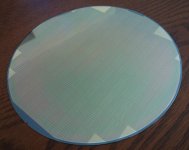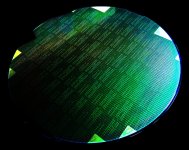This is DIY. Who the hell's got enough $$$ for 1,000?
Ha! If it's diy, who doesn't have the money for a difference of 0.5 dollar and 2 dollars?
dotneck335--if these chips are too expensive for you, they're too expensive and there's plenty of less pricey parts that one can make *wonderful* gear with. There's no sense in complaining about the price, especially in small quantities, as it does nothing to engender good will. Alls you can do is alls you can do.
Also, when I look at a BOM, the cost of my opamps isn't what's breaking the budget. The incremental cost of going from a $0.50 NE5532 to a $2.45 OPA1656 brings my total budget up, what, $10 all said and done? (depending on the circuit of course) Might be a totally inaudible part use but it makes me happy.
Also, when I look at a BOM, the cost of my opamps isn't what's breaking the budget. The incremental cost of going from a $0.50 NE5532 to a $2.45 OPA1656 brings my total budget up, what, $10 all said and done? (depending on the circuit of course) Might be a totally inaudible part use but it makes me happy.
Yes, indeed---all very good opamps!! BUT...the almighty $$$$$$:
This is DIY, you don't need to shell out on the brand-spanking-new latest models, you can buy an old jalopy, pre-owned model. For example AD744 is still a good performer after all these years and goes for about $0.20 on Taobao. Yes it pre-dates fully complementary process tech but you can fix it up with some external transistors.
Yes, indeed---all very good opamps!! BUT...the almighty $$$$$$:
OPA1622 $5.73 OPA2210 $5.17 OPA1642 $2.08 OPA827 $10.80 OPA828 $7.54 OPA1656 $2.72 OPA2156 $2.91
As long as you aren't making minimum wage or something then the cost of an op-amp is nothing compared to the cost of your time spent working on the product or project. A difference of a few dollars is only relevant in quantity. I don't understand why you would expect some of the best op-amps available on the newest processes to cost $1.
This is DIY, you don't need to shell out on the brand-spanking-new latest models, you can buy an old jalopy, pre-owned model. For example AD744 is still a good performer after all these years and goes for about $0.20 on Taobao. Yes it pre-dates fully complementary process tech but you can fix it up with some external transistors.
Nothing wrong with some older parts, but personally I do not touch "pull-outs" or used parts. I have better things to do than worry if the part still meets spec or is damaged for the price difference of a cup of coffee. Maybe if they were DIP parts that are rare and I knew they were socketed. Anything removed with hot air or IR is suspect.
Last edited:
Hi Jan,
Show us a pic of your wafer art, what size is it? I think it would look great in a picture frame.
Show us a pic of your wafer art, what size is it? I think it would look great in a picture frame.
Have a look at today's prices of vacuum tubes that are suitable for audio preamps and power amps.
It always amazes me that people will spend an absolute fortune on the enclosure for the electronics, but when it comes to something that is actually in the signal path, $2 is too much.
The electronics industry, like many others, is not set up to sell onesies and twosies to individual customers. This is why there are distributors like Digi-key, Mouser, etc. They buy in larger quantities from the manufacturer and resell them in small quantities to small customers. You pay for that service they provide.
I just looked up a standard 1206-size 1k Ohm 1% 100ppm Vishay/Dale thick film resistor at Digi-key -- it's 10X as expensive to buy in single quantities as it is to buy in quantity of 2500, and even less expensive per each to buy in quantities of 10,000. So, it's not just ICs with higher prices for the small-quantity purchaser.
As DIYers, we should be happy that so many excellent components are available to us in small quantities at affordable prices.
I just looked up a standard 1206-size 1k Ohm 1% 100ppm Vishay/Dale thick film resistor at Digi-key -- it's 10X as expensive to buy in single quantities as it is to buy in quantity of 2500, and even less expensive per each to buy in quantities of 10,000. So, it's not just ICs with higher prices for the small-quantity purchaser.
As DIYers, we should be happy that so many excellent components are available to us in small quantities at affordable prices.
I guess my point wasn't stated properly. It just seems to me that the $2 OPA1642 will sound just as good as the $10 OPA827, as both specs are superb and well below the threshold of audibility. And for one, it doesn't make much difference. But for for the 26 I need in my old mixing console, it adds up pretty quick!
I guess my point wasn't stated properly. It just seems to me that the $2 OPA1642 will sound just as good as the $10 OPA827, as both specs are superb and well below the threshold of audibility. And for one, it doesn't make much difference. But for for the 26 I need in my old mixing console, it adds up pretty quick!
Oh! That's different. If you don't need the 150uV (max) offset voltage and 2uV/C (max) drift specifications guaranteed by the OPA827, there's certainly no reason to pay for it. There are precision applications (non-audio) which absolutely require guaranteed DC specs, and the customer will pay for them.
By comparison the OPA1642 has a max offset spec of 3.5mV and no guaranteed drift. And as you said, it'll sound just fine.
Hi Jan,
Show us a pic of your wafer art, what size is it? I think it would look great in a picture frame.
I already have it packed, but hope to put it in a frame eventually. These are 8 inch (200mm) wafers. They are very shiny but you see some patterns depending how you hold them in the light. They are actually pretty artsy.
Jan
I already have it packed, but hope to put it in a frame eventually. These are 8 inch (200mm) wafers. They are very shiny but you see some patterns depending how you hold them in the light. They are actually pretty artsy.
Jan
Don't zoom in too close if you photograph it, I don't want to be giving away all of TI's secrets 😉
😱
I even heard one pretending that thick enclosures improve low frequencies in terms of tightness !
It always amazes me that people will spend an absolute fortune on the enclosure for the electronics, but when it comes to something that is actually in the signal path, $2 is too much.
I even heard one pretending that thick enclosures improve low frequencies in terms of tightness !
Thanks Jan, nice present from TI, cheers to them
Yes. Nice people, great engineers!
Jan
Stuart Yaniger (SY here) and I have visited Johnc124 last Friday in Tucson. In all the discussions it became clear that they have a lot of great audio parts coming out. Won't steal his thunder, but John clearly has diyaudio at heart. You will be pleasantly surprised.
Also received a small parting gift of about 50,000 OPA1656's. Each ;-)
Jan
50,000(!?) chips on one wafer, wow!
btw what's up with the repetitive pattern made up of those brighter lines all in same direction on the wafer, johnc124? (see attached picture with increased contrast)
Attachments
Last edited:
It always amazes me that people will spend an absolute fortune on the enclosure for the electronics, but when it comes to something that is actually in the signal path, $2 is too much.
IMV your (TI's) recent audio specific parts are a godsend, performance AND
price. For Pro applications, whether it be new designs or upgrades, channel
and resultant opa count can be significant.
10 years ago using cutting edge silicon meant careful consideration of
trade offs as often the absolute best parts had to be spread thinly.
Different story now.
Also the attention paid to things like CM distortion really has advantages for
applications like parametric EQ's etc where impedances can be fairly high and
there are complex mix of + and - feedback. These parts behave much more like an ideal opamp.
All round thumbs up from me.
TCD
I already have it packed, but hope to put it in a frame eventually. These are 8 inch (200mm) wafers. They are very shiny but you see some patterns depending how you hold them in the light. They are actually pretty artsy.
Jan
It would look pretty cool in an epoxy resin encapsulated artwork, the reflective
effect is enhanced.
TCD
- Home
- Vendor's Bazaar
- OPA1656: High-Performance CMOS Audio Op Amp

